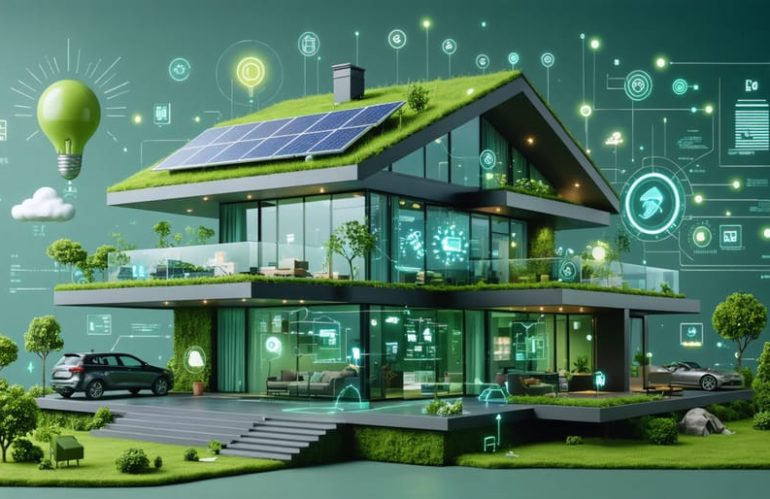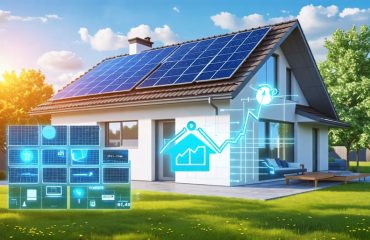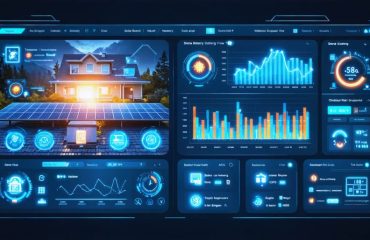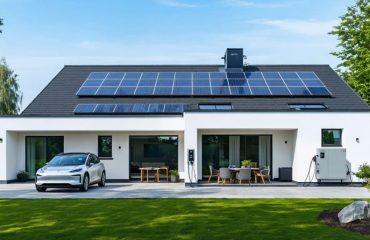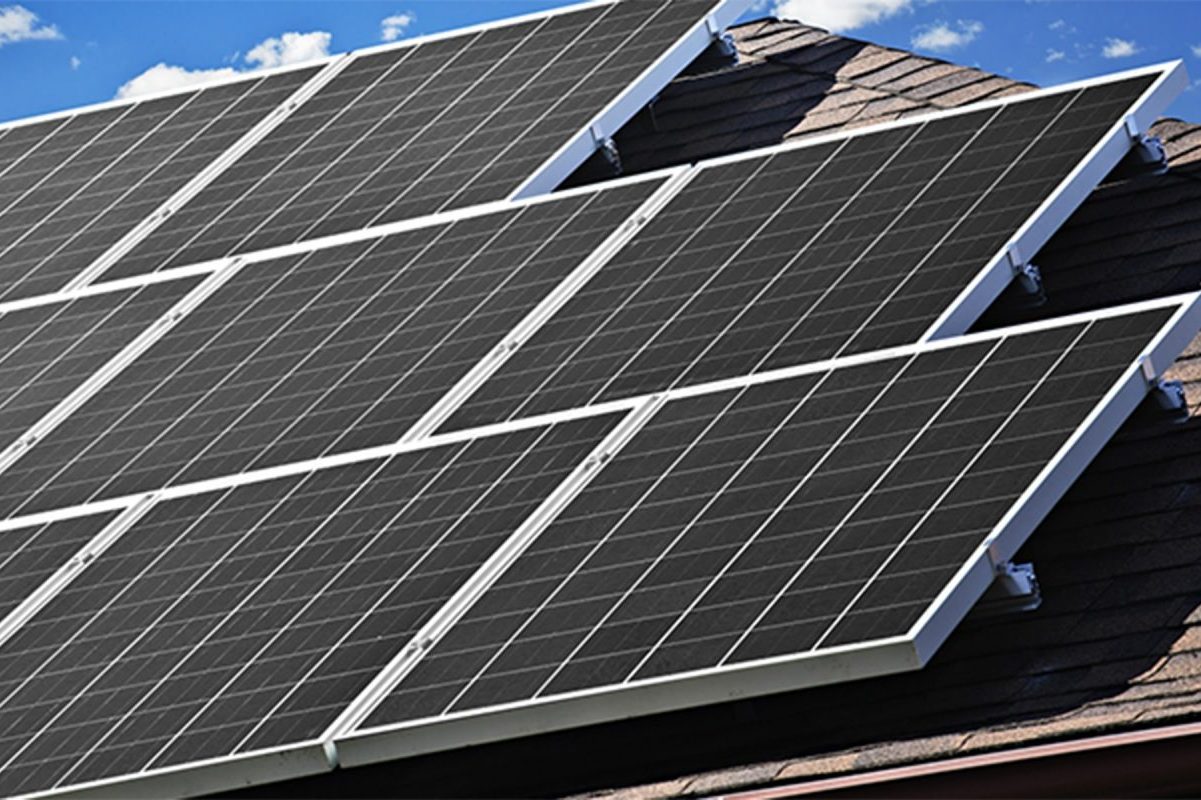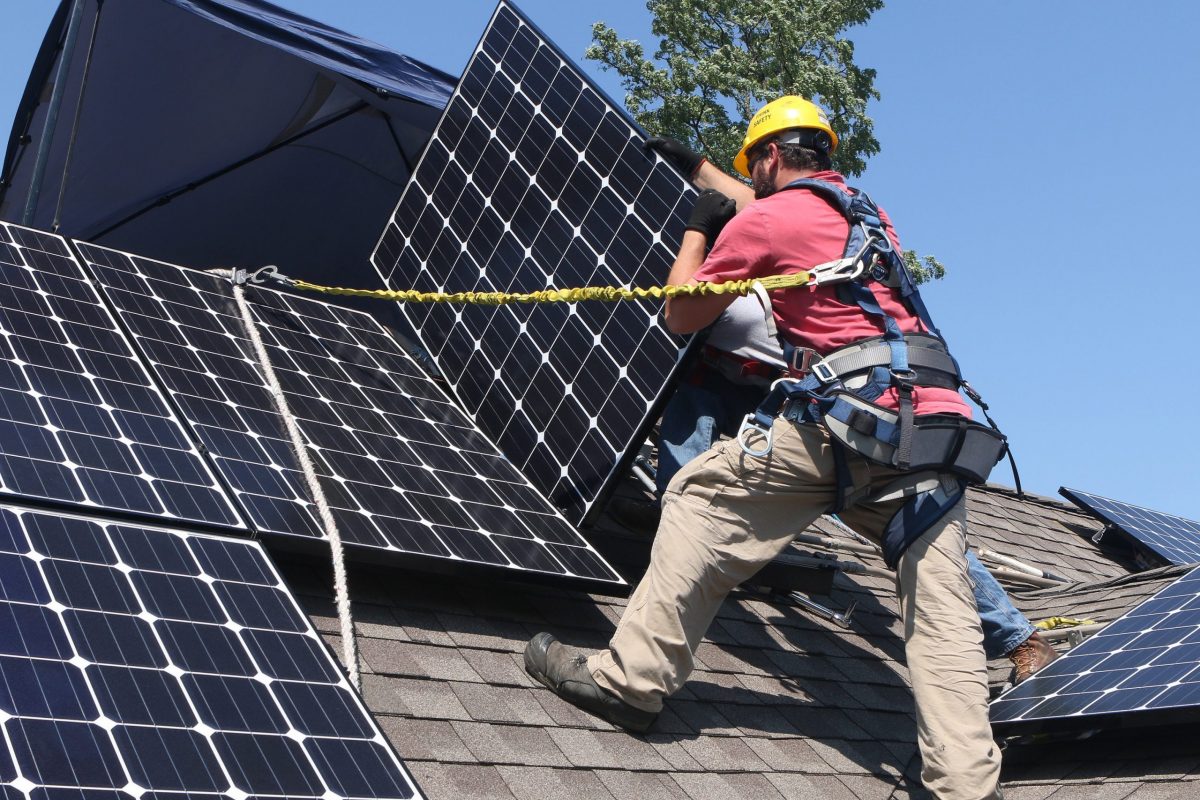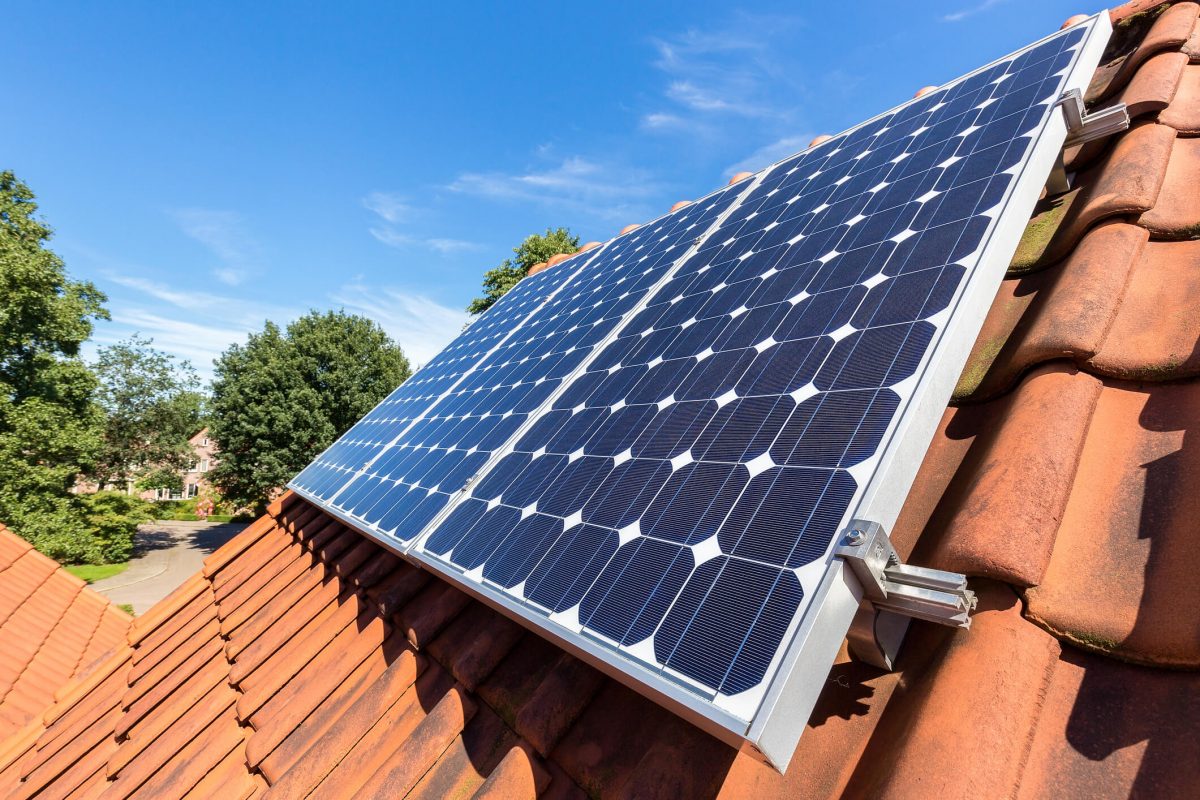Transform your home into an energy-efficient powerhouse with advanced energy management systems that seamlessly boost home efficiency while slashing utility bills. Modern energy management technology has revolutionized how homeowners control their power consumption, offering unprecedented visibility and control over household energy use. By integrating smart sensors, automated controls, and real-time monitoring capabilities, these systems empower families to optimize their energy usage without sacrificing comfort.
Today’s advanced energy management solutions represent a significant leap forward from traditional thermostats and timers, providing intelligent automation that adapts to your lifestyle while maintaining optimal energy efficiency. Whether you’re looking to reduce your carbon footprint, save money on monthly bills, or simply gain better control over your home’s energy consumption, these systems offer a practical and powerful solution for modern homeowners.
The integration of artificial intelligence and machine learning capabilities means these systems continue to improve over time, learning from your habits and preferences to create an increasingly efficient home environment. As energy costs continue to rise and environmental concerns grow, implementing an advanced energy management system isn’t just a luxury—it’s becoming an essential investment in your home’s future.
How Modern Home Energy Management Works
Smart Monitoring and Real-Time Control
Smart monitoring transforms your home into an energy-efficient ecosystem by constantly tracking power usage across all connected devices and appliances. The system collects real-time data about your energy consumption patterns, giving you unprecedented insight into how and when you use electricity throughout your home.
Through an easy-to-use smartphone app or web interface, you can view detailed breakdowns of energy usage by room, appliance, or time of day. The system alerts you to unusual power consumption patterns and identifies energy-hungry devices that might need attention or replacement. You’ll know immediately if your washing machine is using more power than normal or if you’ve accidentally left the basement lights on.
What makes these systems truly “smart” is their ability to automatically adjust your home’s energy usage based on your preferences and daily routines. For example, the system can automatically dim lights in empty rooms, adjust your thermostat based on occupancy, or schedule your water heater to operate during off-peak hours when electricity rates are lower.
This real-time monitoring and control capability typically leads to energy savings of 15-30% for most households, making it a worthwhile investment for environmentally conscious homeowners.
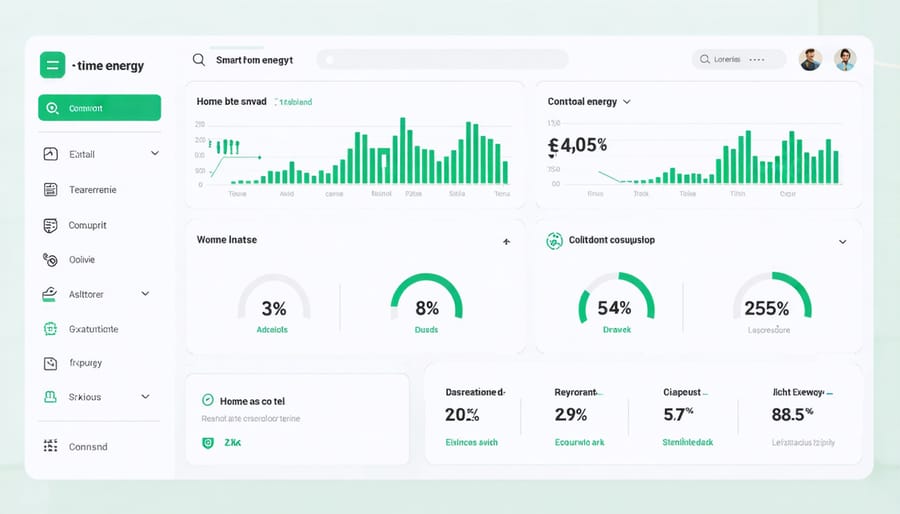
Integration with Solar and Storage
Modern energy management systems excel at harmonizing solar panel production with home energy storage solutions. By continuously monitoring weather patterns, energy usage, and grid conditions, these systems make smart decisions about when to store excess solar power and when to use it. Through advanced battery storage optimization, homeowners can maximize their solar investment while maintaining reliable power supply.
The system automatically adjusts to your daily routines, storing energy during peak solar production hours and releasing it when needed most. For example, on sunny afternoons, excess solar power charges your batteries instead of feeding back to the grid. Then, during evening hours when electricity rates are typically highest, the system draws from stored power rather than purchasing expensive grid electricity.
This intelligent integration also provides backup power during outages, seamlessly switching to stored energy to keep essential appliances running. The system’s smart algorithms learn from your usage patterns, weather forecasts, and electricity rates to create the most cost-effective energy strategy for your home, ensuring you get the most value from your solar and storage investment.
Key Features That Cut Your Energy Bills
Automated Load Shifting
Automated load shifting is a game-changing feature that intelligently manages your home’s energy consumption by moving high-energy tasks to times when electricity rates are lowest. Think of it as your personal energy conductor, orchestrating your appliances to perform their symphony during off-peak hours when power is most affordable.
This smart system works by learning your household’s energy patterns and automatically scheduling energy-intensive activities – like running your dishwasher, charging electric vehicles, or heating your water – during periods of lower demand. Through smart grid integration, your system receives real-time pricing information from utility companies and adjusts your home’s energy usage accordingly.
For example, instead of running your washing machine during peak evening hours, the system might schedule it for early morning when rates are lower. Your electric vehicle can be programmed to charge overnight, and your water heater can pre-heat during off-peak times. This intelligent scheduling happens automatically, requiring no daily input from you.
The benefits are twofold: you’ll see significant savings on your energy bills – typically 10-30% reduction in energy costs – while helping to reduce strain on the power grid during peak hours. It’s like having a sophisticated energy butler working around the clock to optimize your home’s power consumption, all while you go about your daily routine.
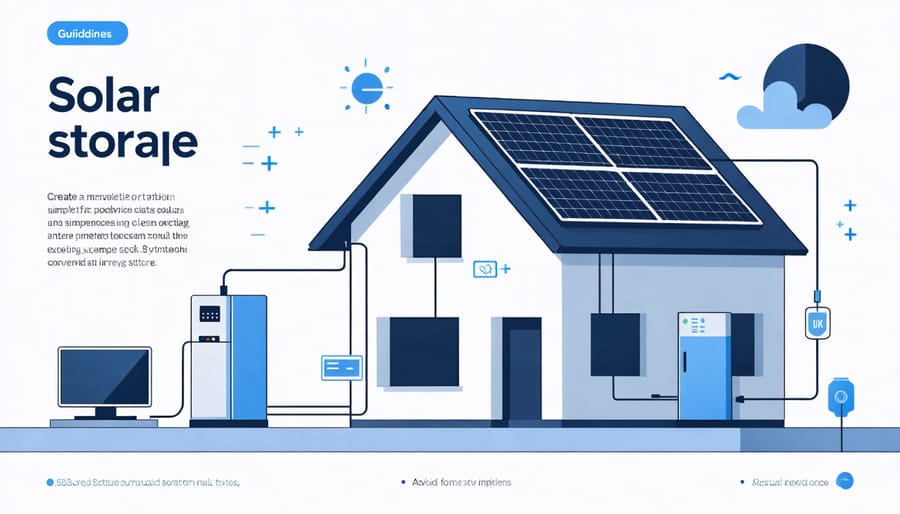
Smart Appliance Integration
Modern smart appliances are revolutionizing how we manage home energy consumption. By integrating these devices with your advanced energy management system, you can create a seamlessly coordinated network that optimizes energy usage throughout your home. From smart thermostats that learn your temperature preferences to intelligent washing machines that run during off-peak hours, these interconnected appliances work together to maximize efficiency.
The system can automatically schedule energy-intensive tasks like running the dishwasher or charging electric vehicles during times when electricity rates are lowest. Smart refrigerators can adjust their cooling cycles based on usage patterns, while connected lighting systems automatically dim or brighten based on natural light availability and room occupancy.
What makes this integration particularly powerful is the AI-powered energy savings that analyze your household’s energy consumption patterns. This intelligent coordination ensures appliances work harmoniously to reduce overall energy use without sacrificing comfort or convenience.
The best part? You can monitor and control all these devices through a single, user-friendly app on your smartphone. This means you can adjust settings, check energy usage, and receive notifications about potential energy-saving opportunities, whether you’re at home or away. The system can even alert you when appliances need maintenance, helping prevent energy waste from inefficient operation.
Weather-Based Optimization
Modern energy management systems use sophisticated weather forecasting to optimize your home’s energy usage automatically. By analyzing upcoming weather patterns, these systems can make proactive adjustments to your heating, cooling, and other energy-consuming systems before weather changes occur.
For example, if the forecast predicts a hot afternoon, your system will pre-cool your home during the cooler morning hours when energy costs are typically lower. Similarly, on cloudy days when solar panel output might be reduced, the system can automatically shift non-essential power usage to times when grid electricity is less expensive.
These weather-based optimizations work seamlessly with your smart home devices. When rain is predicted, your smart irrigation system can skip scheduled watering. During summer heat waves, your system can automatically adjust your smart blinds and thermostats to maintain comfort while minimizing energy usage.
The real beauty of weather-based optimization lies in its ability to learn from past weather patterns and your household’s energy usage habits. Over time, the system becomes more accurate in predicting and adjusting for weather-related energy needs, leading to greater efficiency and cost savings.
This intelligent weather adaptation can reduce your energy bills by up to 20% while maintaining optimal comfort levels throughout your home. It’s like having a personal energy manager who’s always checking the weather forecast to make the smartest decisions for your home.
Setting Up Your System for Success
Choosing Compatible Components
When building your advanced energy management system, selecting compatible components is crucial for optimal performance. Start by choosing a central hub or controller that supports common communication protocols like Zigbee, Z-Wave, or Wi-Fi. This ensures your system can communicate effectively with various devices and sensors throughout your home.
Smart thermostats are a cornerstone component – look for models that offer API integration and compatibility with your chosen hub. Popular brands like Nest, Ecobee, and Honeywell often provide extensive integration options and user-friendly interfaces.
For monitoring individual appliances and devices, select smart plugs and outlets that match your hub’s protocol. These should offer real-time energy consumption data and remote control capabilities. Consider power strips with multiple smart outlets for entertainment centers or home office setups.
Smart lighting systems should also align with your chosen protocol. LED bulbs and fixtures with dimming capabilities provide the most energy-efficient lighting options while maintaining functionality within your system.
When selecting sensors, ensure they can operate within your home’s wireless range and provide accurate readings. Temperature, motion, and occupancy sensors should work seamlessly with your hub to automate energy usage based on real-time conditions.
Remember to check manufacturer compatibility lists and read user reviews before purchasing components. This helps avoid integration issues and ensures all parts of your system work together effectively.
Optimization Tips
To maximize the efficiency of your advanced energy management system, start by establishing a baseline of your energy usage patterns. Monitor your consumption for at least two weeks to identify peak usage times and energy-draining appliances. This data will help you make informed decisions about scheduling and automation.
Consider programming your system to automatically adjust temperature settings based on your daily routine. For example, set the thermostat to reduce heating or cooling when you’re typically away and resume comfort levels shortly before you return home. During peak rate periods, schedule energy-intensive activities like laundry or dishwashing for off-peak hours to reduce costs.
Regular maintenance is crucial for optimal performance. Clean or replace HVAC filters monthly, ensure sensors are properly calibrated, and update your system’s software when available. Take advantage of your system’s mobile app to monitor real-time energy usage and receive alerts about unusual consumption patterns.
Integrate smart plugs and switches to control phantom energy drain from electronics and appliances. Use your system’s zone control features to heat or cool only occupied areas of your home. During seasonal changes, adjust your automation schedules to account for varying daylight hours and temperature fluctuations.
For even better results, combine your energy management system with proper insulation and weatherization. Consider installing LED bulbs and energy-efficient appliances to complement your system’s capabilities. Remember to review and adjust your settings quarterly to ensure they align with your changing lifestyle and seasonal needs.
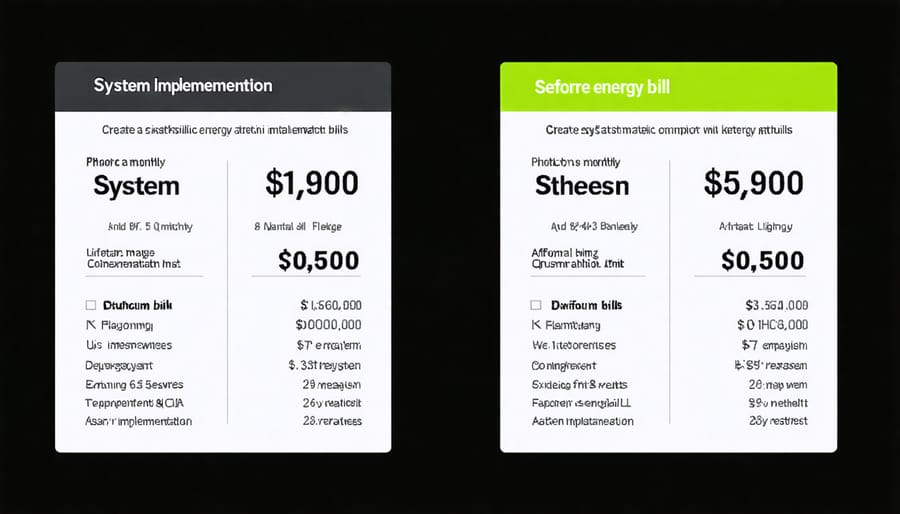
Real Results from Real Homeowners
Meet Sarah and Tom Wilson from Denver, who saw their monthly energy bills drop by 32% after installing an advanced energy management system in their 2,400-square-foot home. “We were skeptical at first,” Sarah admits, “but within the first three months, we could see the difference not just in our bills, but in how comfortable our home felt throughout the day.”
In Seattle, the Martinez family achieved even more impressive results. Their smart system helped them reduce their annual energy consumption by 40%, saving over $1,200 in the first year alone. “The system learned our habits and automatically adjusted our heating and cooling schedules. We barely had to think about it,” explains Robert Martinez.
Emily Chen, a retired teacher in Austin, shares how her energy management system helped her maintain a consistent temperature while caring for her elderly mother. “The system maintains perfect conditions in my mother’s room, while optimizing energy use throughout the rest of the house. Our summer cooling costs dropped by 35%.”
The Thompson family in Chicago found unexpected benefits beyond energy savings. “The system alerted us to an unusual spike in energy usage, which turned out to be a failing water heater. We fixed it before it became a major problem,” says James Thompson. Their system has helped them save an average of $890 annually on utility bills.
In Florida, the Rodriguez household combined their energy management system with solar panels, achieving near-zero energy bills during summer months. “The system intelligently balances our solar production with our energy usage, storing excess energy when needed and using it during peak hours,” explains Maria Rodriguez.
These real-world examples demonstrate consistent savings ranging from 25% to 45% on energy costs, with most households recouping their initial investment within 18-24 months. Beyond the financial benefits, users consistently report improved home comfort, better control over their energy usage, and peace of mind from knowing their homes are operating efficiently.
Embracing an advanced energy management system represents a significant step toward a more sustainable and cost-effective future for your home. By implementing these smart solutions, you can expect to see immediate reductions in your energy bills while contributing to environmental conservation. The combination of real-time monitoring, automated controls, and intelligent optimization ensures that every watt of energy is used efficiently, potentially leading to savings of up to 30% on your monthly utility costs.
The benefits extend far beyond financial savings. With improved comfort levels, enhanced home security features, and the ability to control your energy usage remotely, these systems transform how we interact with our living spaces. The peace of mind that comes from knowing your home is operating at peak efficiency while minimizing its environmental impact is invaluable.
As energy costs continue to rise and environmental concerns become more pressing, there’s never been a better time to invest in an advanced energy management system. The initial investment is quickly offset by long-term savings, increased property value, and the satisfaction of contributing to a greener future.
Take the first step today by assessing your current energy usage and exploring the various system options available. With user-friendly interfaces and professional installation services, transitioning to smart energy management has never been easier. Your journey toward energy efficiency starts with a simple decision to embrace the technology that’s shaping the future of home energy management.

